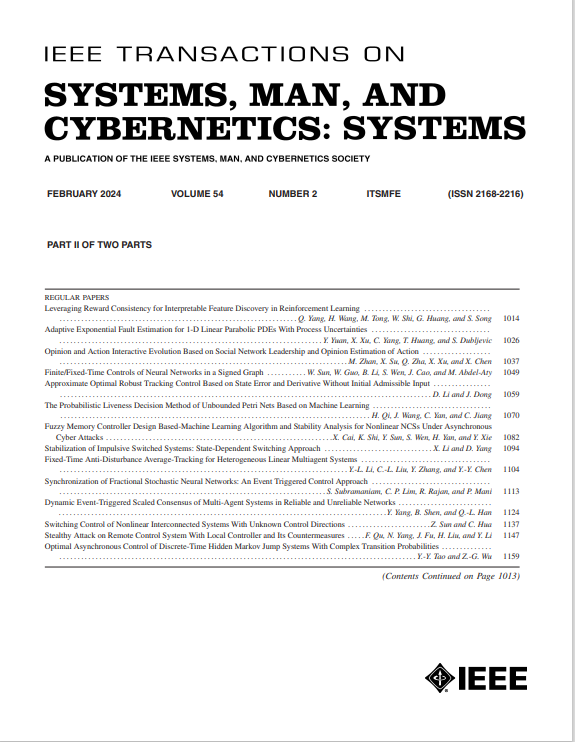流行病期间个体的集群同步:基于收缩的分析
IF 8.7
1区 计算机科学
Q1 AUTOMATION & CONTROL SYSTEMS
IEEE Transactions on Systems Man Cybernetics-Systems
Pub Date : 2025-07-21
DOI:10.1109/TSMC.2025.3585121
引用次数: 0
摘要
本文利用耦合非线性网络研究流行病期间个体的集群同步(CS),该网络将扩散耦合非线性系统与易感-感染-恢复(SIR)病毒模型集成在一起。为了更好地反映现实生活场景,个体被分组到集群中,并且该模型结合了根据集体行为模式而变化的恢复速率。本研究的重点是分析CS行为与病毒在网络中的传播进程之间的关系。在保证有向图满足聚类输入等价条件和系统雅可比矩阵保持有界的前提下,利用收缩分析建立实现CS的条件,这些条件受病毒状态的影响。进一步探讨了CS对流行病动力学的影响。数值模拟验证了理论结果。本文章由计算机程序翻译,如有差异,请以英文原文为准。
Cluster Synchronization of Individuals During an Epidemic: A Contraction-Based Analysis
This article investigates cluster synchronization (CS) of individuals during an epidemic using a coupled nonlinear network that integrates diffusion-coupled nonlinear systems with an susceptible-infected-recovered (SIR) virus model. To better reflect real-life scenarios, individuals are grouped into clusters, and the model incorporates recovery rates that vary according to collective behavior patterns. The study focuses on analyzing the relationship between CS behavior and the progression of virus transmission within the network. By ensuring that the directed graph satisfies the cluster input equivalence condition and that the system’s Jacobian matrix remains bounded, contraction analysis is employed to establish conditions for achieving CS, which are influenced by the virus’s state. Furthermore, the impact of CS on epidemic dynamics is explored. Numerical simulations validate the theoretical findings.
求助全文
通过发布文献求助,成功后即可免费获取论文全文。
去求助
来源期刊

IEEE Transactions on Systems Man Cybernetics-Systems
AUTOMATION & CONTROL SYSTEMS-COMPUTER SCIENCE, CYBERNETICS
CiteScore
18.50
自引率
11.50%
发文量
812
审稿时长
6 months
期刊介绍:
The IEEE Transactions on Systems, Man, and Cybernetics: Systems encompasses the fields of systems engineering, covering issue formulation, analysis, and modeling throughout the systems engineering lifecycle phases. It addresses decision-making, issue interpretation, systems management, processes, and various methods such as optimization, modeling, and simulation in the development and deployment of large systems.
 求助内容:
求助内容: 应助结果提醒方式:
应助结果提醒方式:


